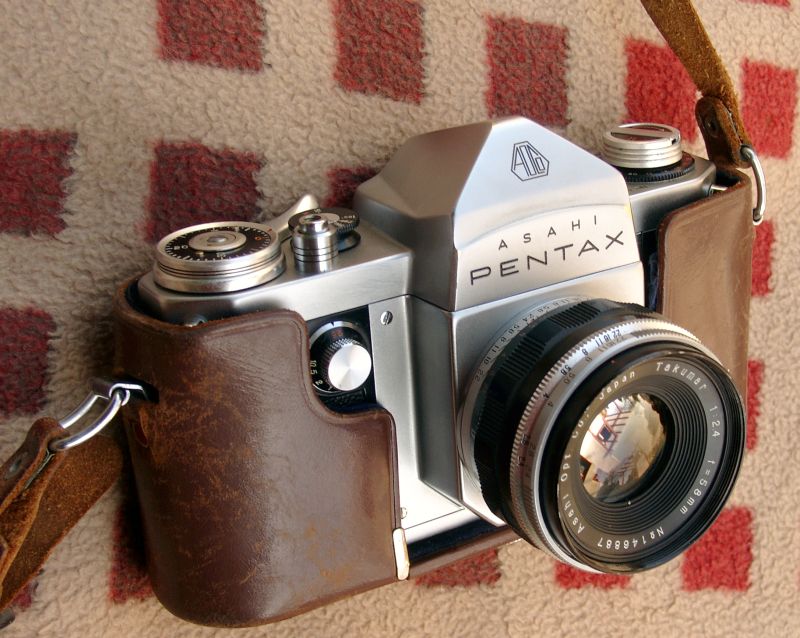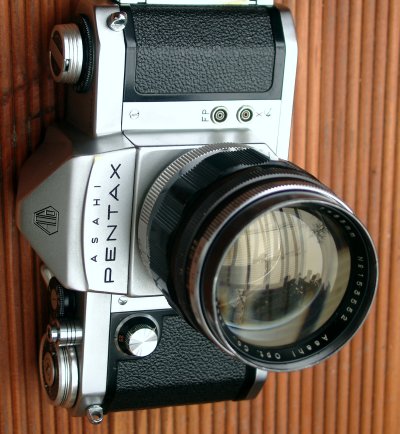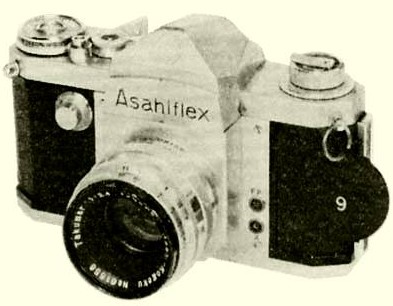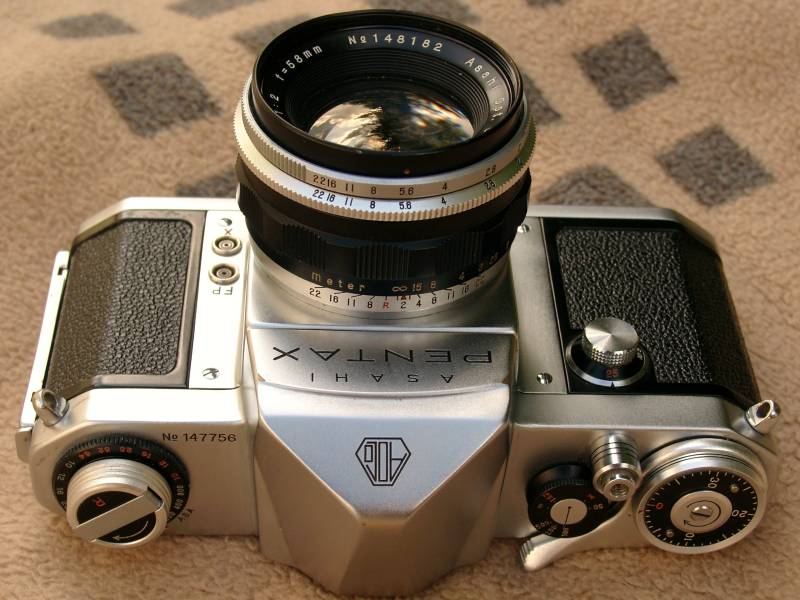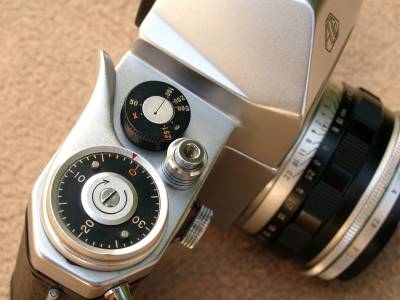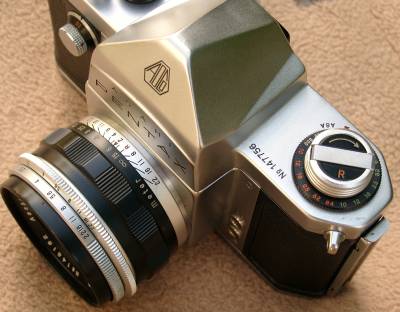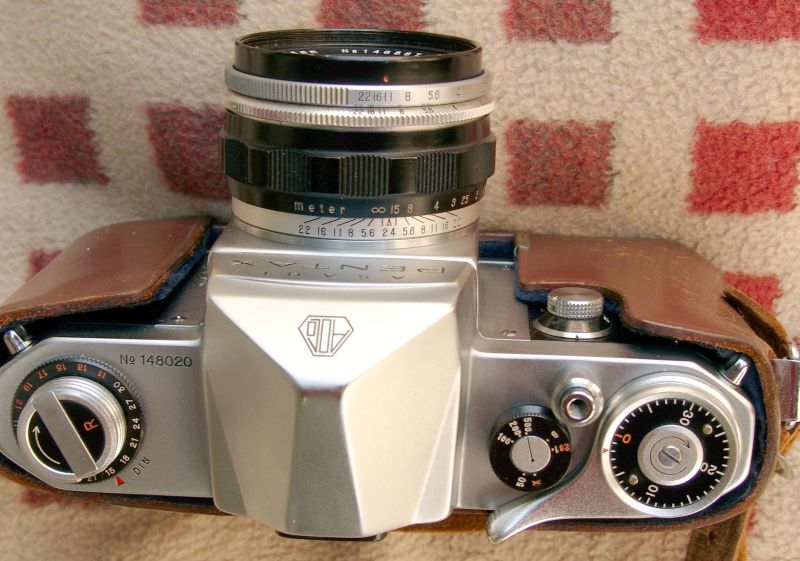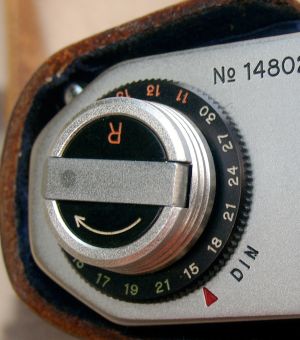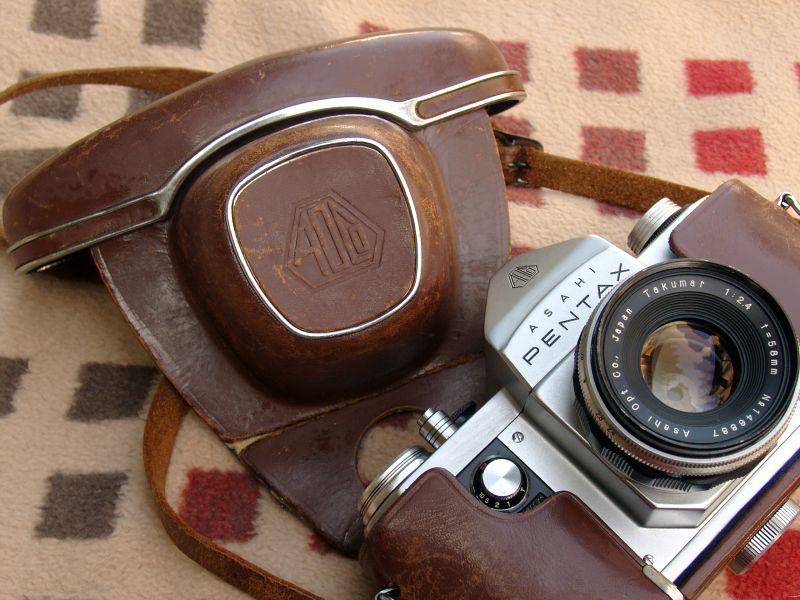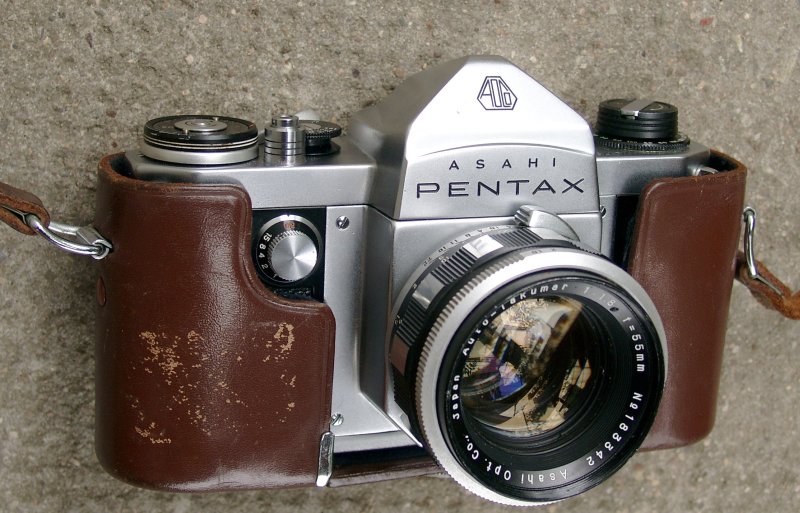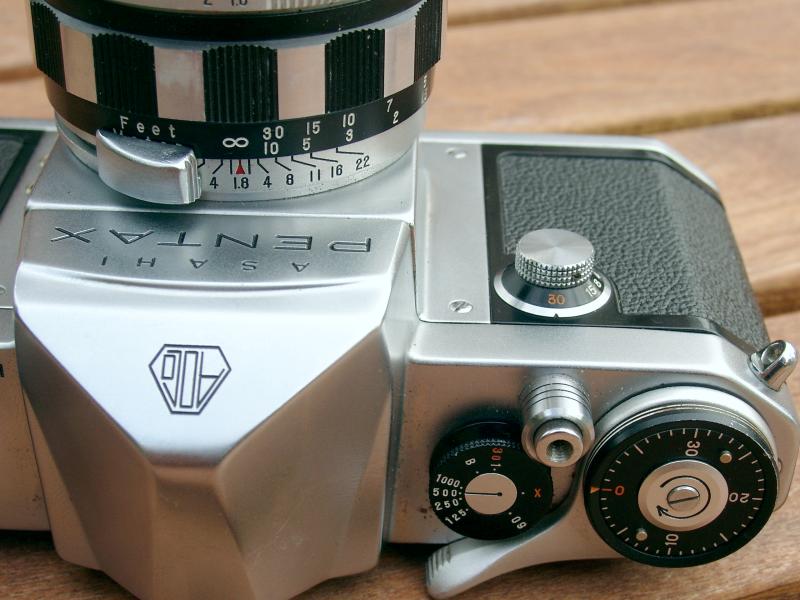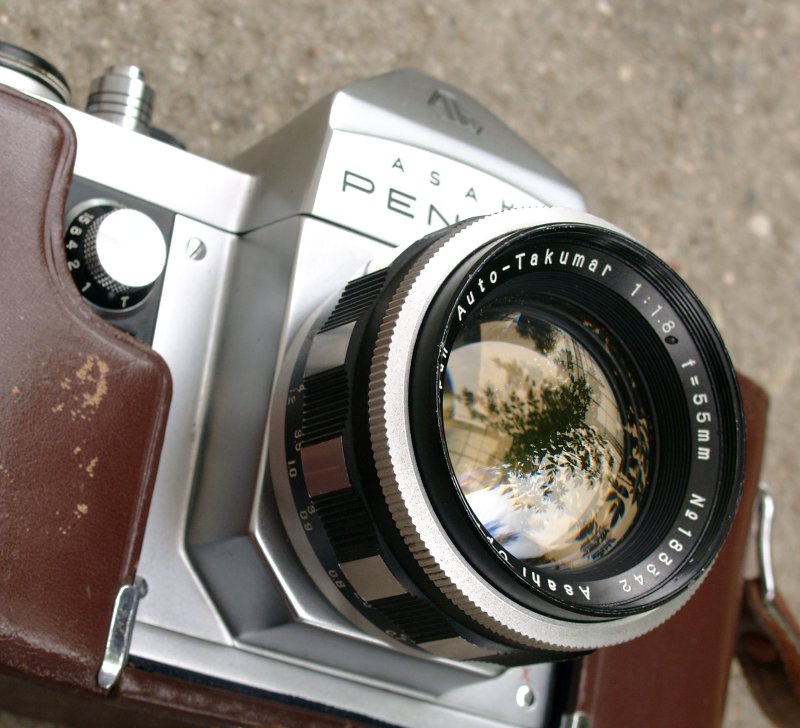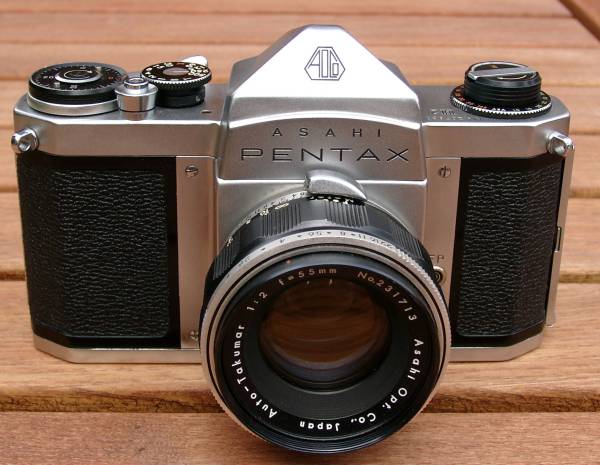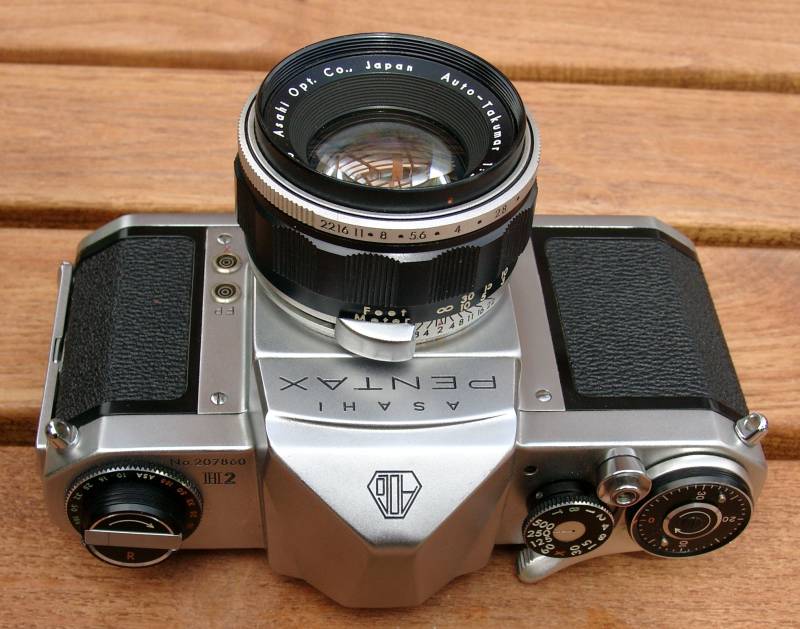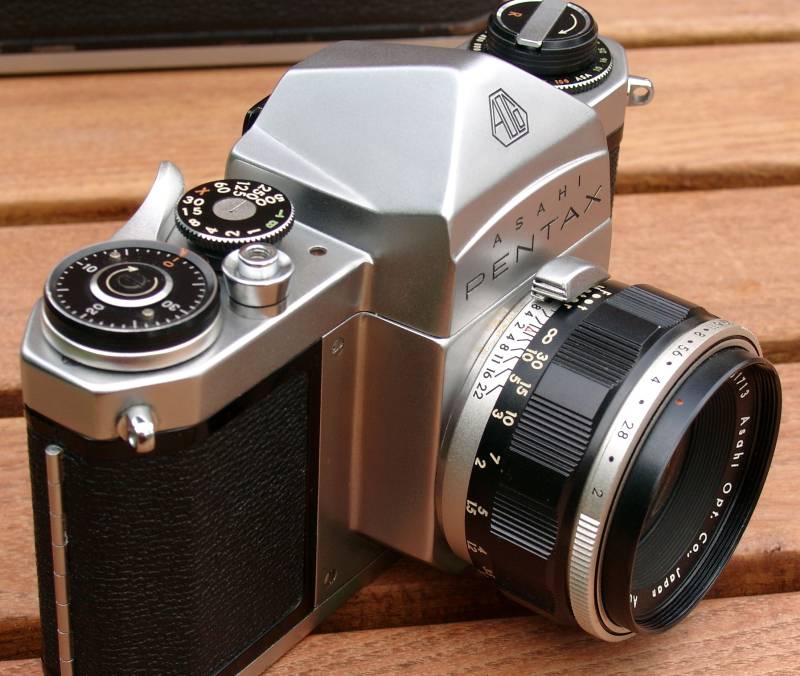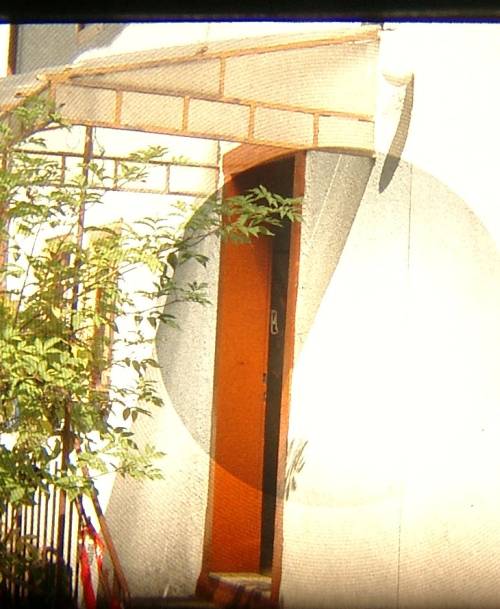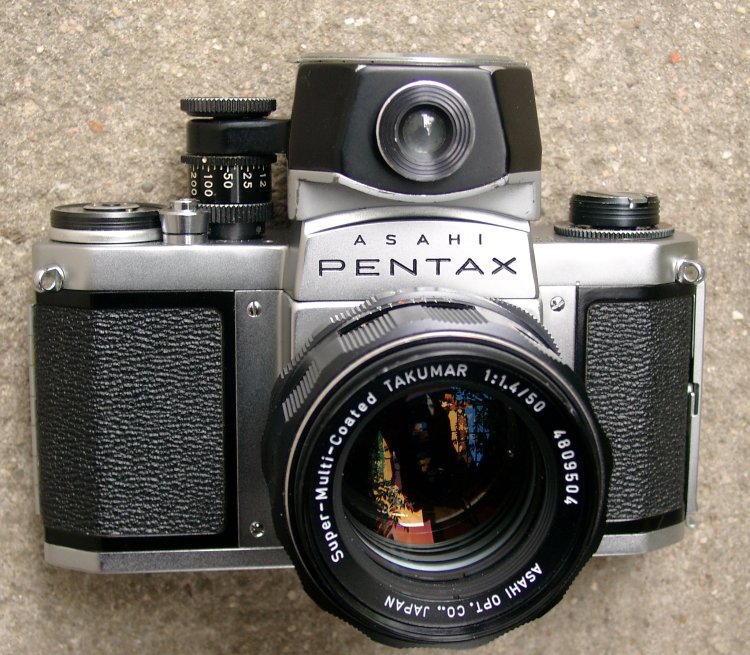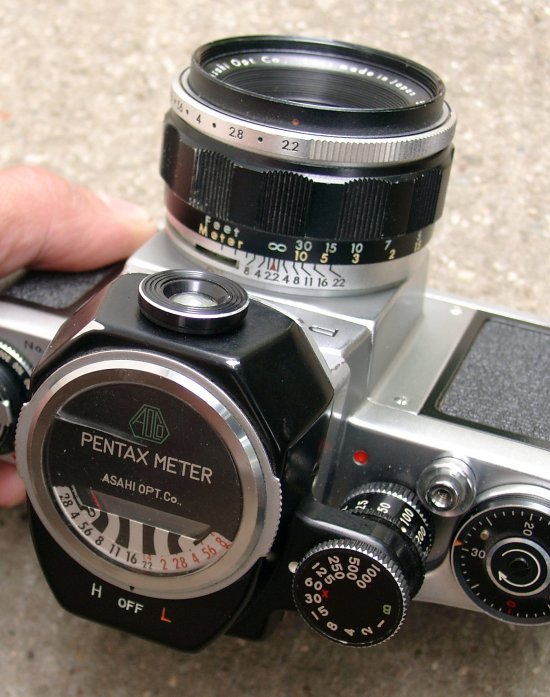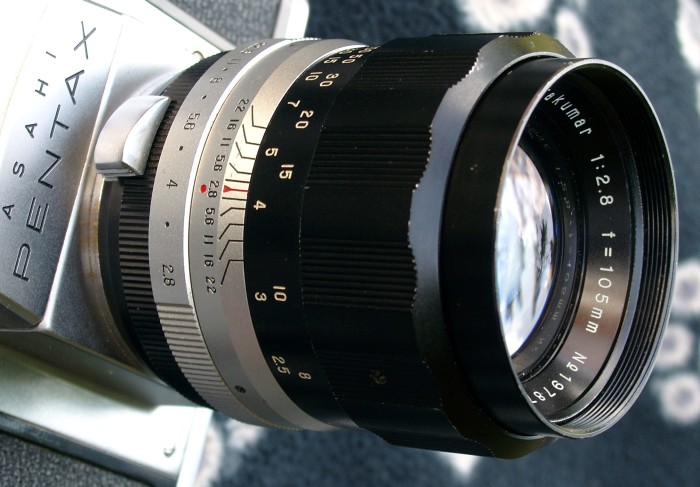- They have ideas (first instant return mirror, first TTL-metering)
- They have a unique Design,
modern and more functional than
all others
- They continue to improve their cameras year by year
Pentax got a Synonym for a form, for SLR..just not to say, for cameras in general. They made the public thinking for three decades that a professional camera looks like a Pentax and nothing else!
So how they start, where they coming from? Since 1939 Asahi Optical made its name in manufacturing aerial cameras, after WW-II of Jupiter small binoculars (6x15) and coated lenses for micor cameras. Early factory history was described by the Italian Asahi Optical Historical Club. 1950 they looking for new ideas and the president ordered his two engineers Nobuyuki Yoshida (responsible for camera bodies) and Ryohei Suzuki (lenses) to build a compact high-performance 35mm film SLR camera competitive with the best Rangefinder cameras of the world like LEICA and CONTAX. In 1935 president Saburo Matsumoto had privately bought a German "Reflex-Korelle" (build by Franz Kochmann, Dresden, 6cm x 6 cm film SLR) which they used as a starting point for cosntruction. Some sources guess they also had known the "Praktiflex" of Kamera-Werkstätten Guthe & Thorsch in Niedersedlitz near to Dresden which was shown 1939 at the spring fair in Leipzig and build from 1940 in 14.000 numbers.. not a small number for third 35mm film SLR camera of the world und ancestry of the East-German Praktica.
Anyhow if the Praktiflex had influenced PENTAX or not, it was directly influenced by the pre-war camera industry of Dresden.
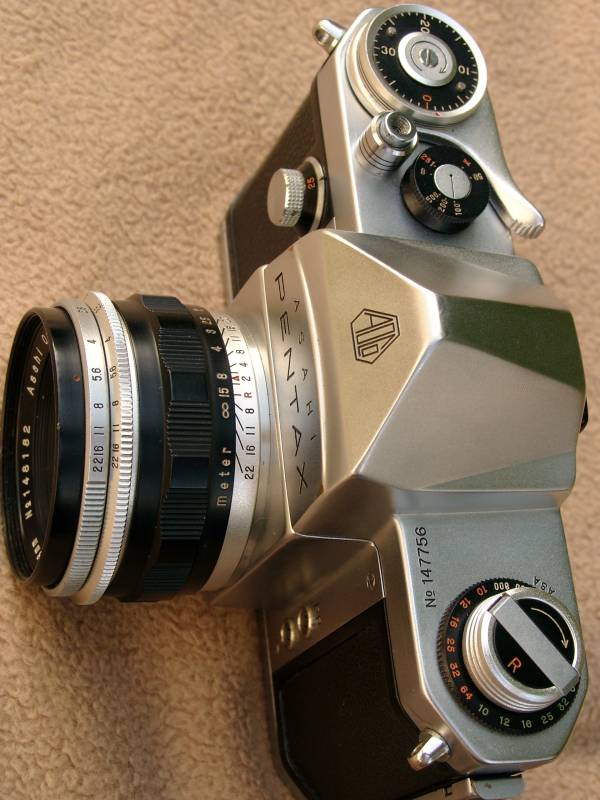
Asahi Pentax 1957 (Original)
